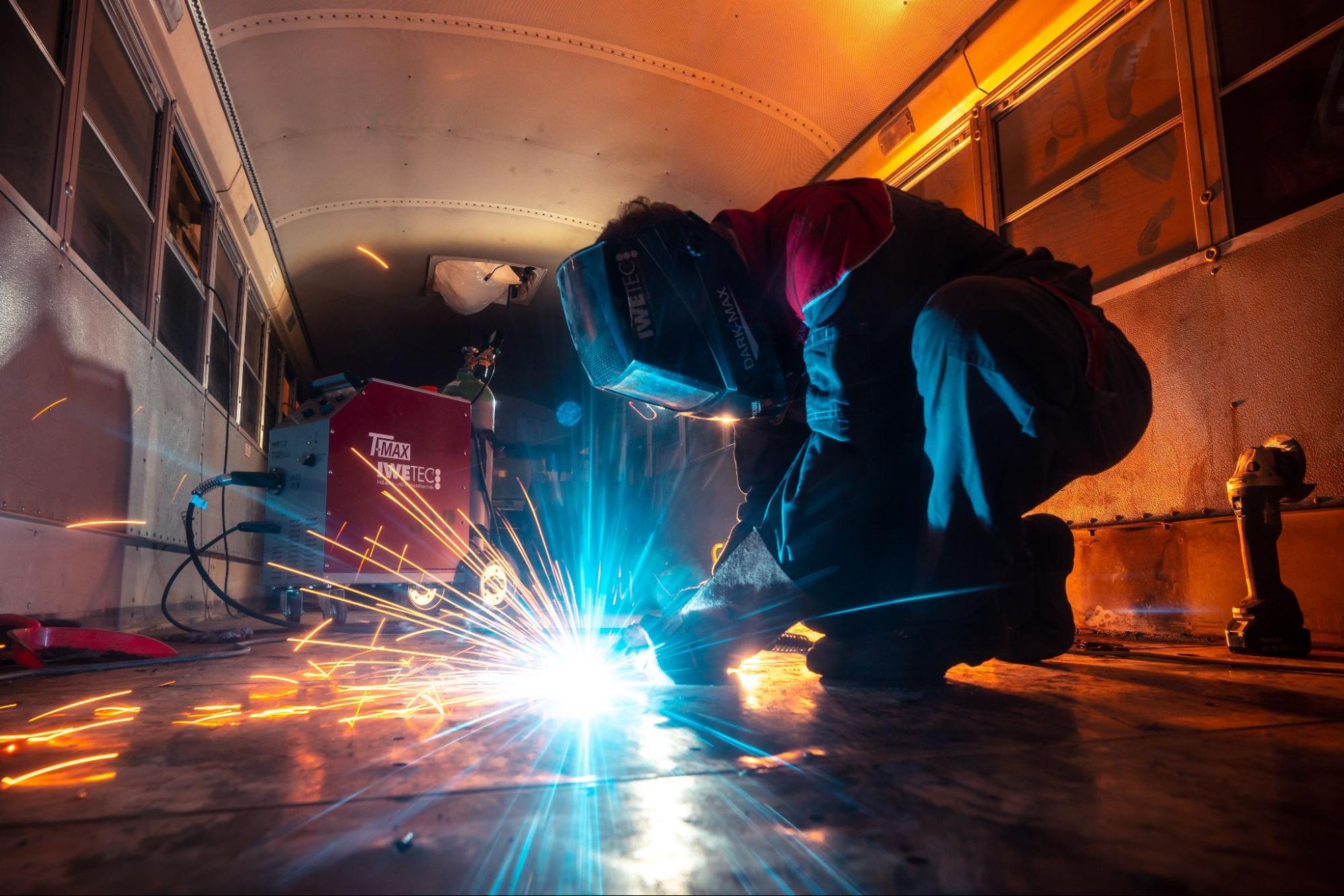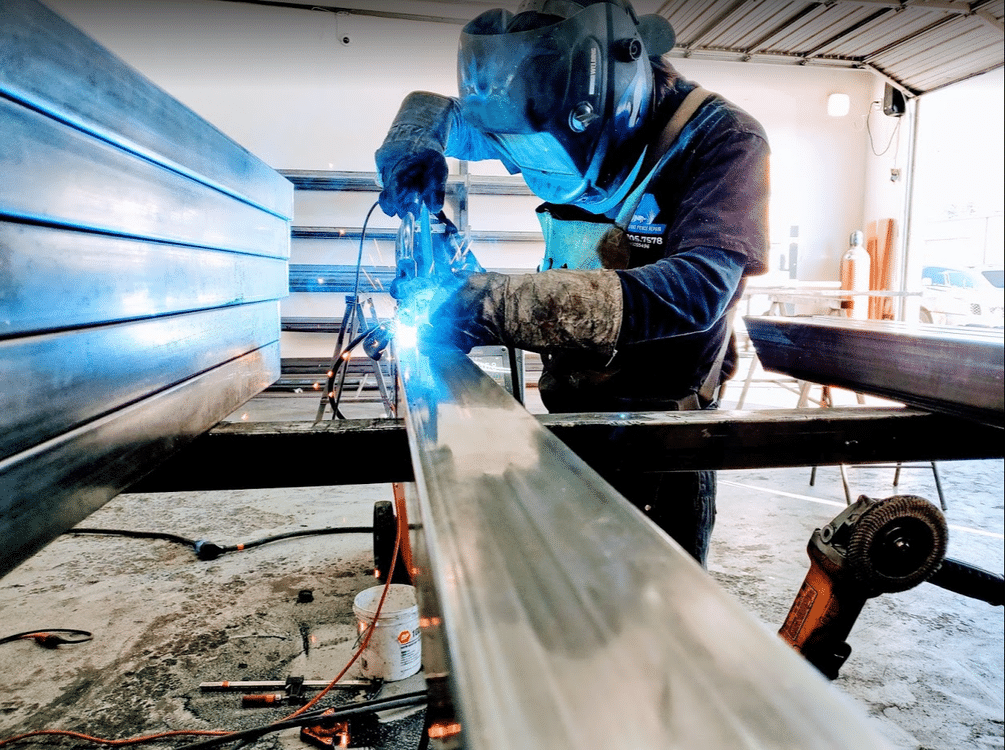Precise Welding Inspection Service for Metal Construction
Precise Welding Inspection Service for Metal Construction
Blog Article
Opening the Key Sorts Of Welding Services for Your Tasks
In today's landscape of diverse welding services, comprehending the nuances and applications of different welding methods is vital for effective task execution - Welding Inspection Service. By unwinding the key kinds of welding services offered, one can navigate the complexities of selecting the most appropriate method to make sure precision, effectiveness, and high quality in welding projects.
Common Welding Techniques
Numerous frequently used welding strategies play vital duties in different industrial fields. One of the most commonly used approaches is Gas Steel Arc Welding (GMAW), also recognized as MIG welding.
One more popular welding strategy is Gas Tungsten Arc Welding (GTAW), frequently referred to as TIG welding. TIG welding makes use of a non-consumable tungsten electrode to produce the weld and needs a separate filler product. This method is favored for its accuracy, ability, and control to produce high-quality welds on thin materials.
Shielded Steel Arc Welding (SMAW), or stick welding, is another essential technique where a flux-coated electrode is utilized to develop the weld. SMAW is known for its simplicity, versatility, and viability for exterior and on-site welding applications. These usual welding methods are important for producing frameworks, machinery, and various devices throughout markets.
Advanced Welding Processes
Advanced welding procedures incorporate cutting-edge techniques that press the borders of conventional welding methods in regards to precision, adaptability, and performance. One such process is laser beam welding, which uses a focused light beam of light to sign up with steels with very little heat-affected zones, making it excellent for high-precision or fragile jobs. Furthermore, electron light beam welding utilizes a high-velocity electron beam to produce deep welds in thick materials, using exceptional strength and quality.
In addition, rubbing stir welding is a solid-state joining process that utilizes a rotating device to produce frictional warm, bonding materials without melting them. This technique is especially helpful for joining lightweight alloys with superior mechanical buildings. One more innovative method is ultrasonic welding, where high-frequency ultrasonic vibrations are used to produce solid-state welds in plastics, steels, and various other materials, supplying clean and rapid joining solutions.
These progressed welding processes accommodate a diverse series of commercial demands, supplying effective, top quality, and accurate solutions for numerous jobs, from aerospace elements to automotive components and past.
Specialized Welding Applications

Automated Welding Solutions
In modern industrial setups, the implementation of automated welding options has actually revolutionized production processes by improving performance and precision. Automated welding systems utilize sophisticated technologies such as robotics, computer numerical control (CNC), and expert system to execute welding tasks with minimal human intervention (Welding Inspection Service). These systems use their explanation countless advantages, consisting of increased productivity, enhanced weld high quality, and minimized manufacturing prices
One trick benefit of automated welding services is their capacity to continually create high-grade welds, bring about boosted general item top quality. In addition, these systems can run constantly, 24/7, without the demand for breaks, resulting in higher output degrees and faster job completion times. By using automated welding options, firms can also alleviate the risks connected with human mistake, ensuring higher accuracy and repeatability in the welding procedure.
Furthermore, automated welding solutions are extremely functional and adaptable to various welding applications, from detailed parts to large-scale structures. Whether in vehicle production, aerospace sectors, or building projects, the integration of automated welding systems provides an affordable side by simplifying operations and delivering exceptional welding results.
Ingenious Welding Technologies
The evolution of automated welding solutions has actually led the means for the assimilation and advancement of innovative welding innovations in contemporary industrial applications. One such advanced innovation is laser beam of light welding, which uses an extremely concentrated beam of light of light to join steel elements with precision and efficiency. This technique is particularly beneficial for projects requiring intricate welds on materials with high melting factors or for applications where marginal heat-affected areas are critical.
An additional cutting-edge welding modern technology getting appeal is rubbing stir welding (FSW), a solid-state joining procedure that develops high-strength bonds by producing frictional heat between 2 items of metal. FSW is widely made use of in sectors such as aerospace and vehicle for its capability to generate welds with remarkable mechanical homes and boosted structural integrity.
In addition, electron beam of light welding (EBW) is a sophisticated method that utilizes a beam of light of high-velocity electrons to create specific, deep welds in metal components. This modern technology is preferred for its ability to bond dissimilar steels and products with varying densities efficiently. As industries proceed to demand better and performance in welding procedures, these cutting-edge modern technologies are poised to play a significant function fit the future of commercial welding applications.

Conclusion
Finally, understanding the crucial types of welding solutions is crucial for Extra resources effectively finishing a variety of projects. From usual welding methods to sophisticated processes, specialized applications, automated solutions, and ingenious modern technologies, each method uses unique advantages and applications. By acquainting on your own with these various welding options, you can select the most suitable strategy for your specific job requirements and attain top quality outcomes.
In today's landscape of varied welding solutions, understanding the nuances and applications of different welding methods is critical for effective task implementation. By unraveling the crucial types of welding services readily available, one can navigate the ins and outs of picking the most ideal approach to ensure precision, effectiveness, and high quality in welding jobs. As we begin on this expedition of welding solutions, a much deeper insight into the globe of welding waits for, promising insights that can raise the results of your projects.

Report this page